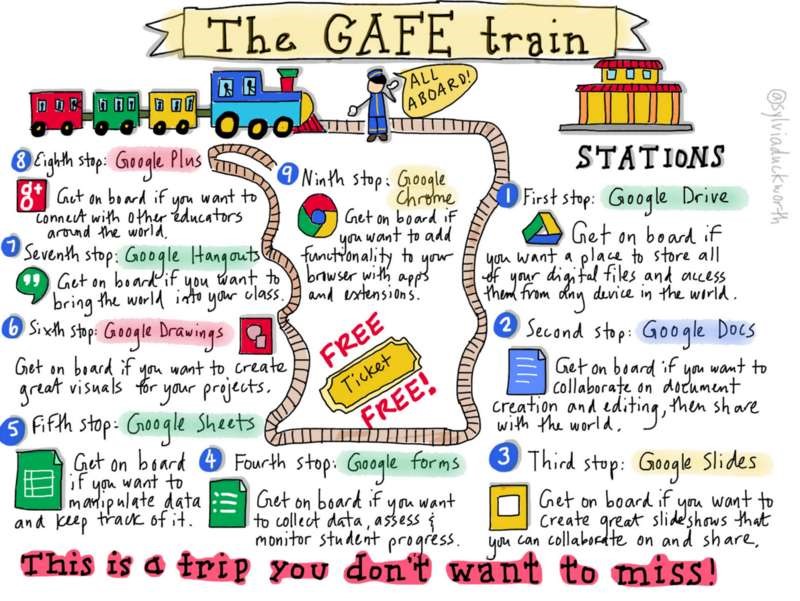What Is EdTech? Educational technology (EdTech) describes the technological tools that can be used for educational purposes and how they are/can be implemented for learning. As Colin Duff states in his article ‘Everything you need to know about technology’, EdTech is being used to update and advance our current education system. Although there are many aspects of educational technology, how EdTech is implemented is different for every district, every school, and every classroom.
Who am I? I am a current teacher on Vancouver Island. I do not have a full-time position in a classroom, but I am a Teacher on Call (TOC) who visits the same classrooms regularly. Although being a TOC has its advantages and disadvantages, being involved with different schools and classrooms allows me to see how/if technology is being implemented to support and advance student learning. As I primarily teach at the Gr. 7 level, I am going to analyze how technology is being implemented and what technological tools are available for students and teachers at this grade level.
What does the Curriculum say? In the re-designed curriculum, the overview acknowledges that the world we live in is technology-rich and accessibility to information is immediately accessible. Adding on, under ICT-enabled learning environments, the document states the following: “Students need opportunities to develop the competencies required to use current and emerging technologies effectively in all aspects of their learning and life. Technology can facilitate collaboration between students, educators, parents, and classrooms while also providing schools with rich online resources. Today’s technology enables classrooms, communities, and experts around the world to share digitally in a learning experience, wherever they may be.”
In the Gr.7 part of the B.C. Curriculum, there is an Applied Design, Skills, and Technologies section of the curriculum. In this section, it is stated that “the ability to design, make, acquire, and apply skills and technologies is important in the world today and key in the education of citizens for the future.” In addition, applied technologies entail “the skills needed to access technologies that help facilitate design thinking and the design process; these differ according to the area of application.” An important thing to note is how the curriculum addresses safety implications regarding the use of educational technology. A major goal of educational technology is to create safe spaces for students to use technology in the learning environment but it is also important to educate students about internet safety and give them the tools to be digitally active, safe, and responsible citizens. There is a section in the curriculum about safety considerations and it is essential that educators educate themselves properly so that they can be effective role moles and educators to their students. These pieces of the curriculum regarding technology open pathways for educational technology as the benefits of implementing these technologies are evident.
What are the benefits of implementing technology in education?
- Increased student engagement and interaction
- It offers new learning techniques
- It encourages differentiation
- It encourages more collaboration
- It boosts productivity and creativity
- It makes learning more accessible
- It decreases paper (environmentally friendly)
- It introduces students to the digital world
- It prepares students for a technological future
- It increases accessibility
- It allows for distance (or blended) learning
- It is more efficient for students and teachers
What technology is available in my school district?
In regards to EdTech at the district level, there is technology that is provided to schools to be used for educational purposes. I am aware that the following pieces of technology are not universal between schools in the district, but at the schools I primarily work at, there are:
- Document Cameras
- Projectors
- Apple TVs (for connecting iPad, MacBook, iPhone, etc.)
- Desktop Computers
- Personal Laptops for Continuing Teachers
- Chromebook Carts (is not 1:1 but rather ~2:1)
- iPads (Library Set used for ELL, translations, photography, etc.)
How is the technology used in the schools/classrooms that I am involved with? These technological devices can be utilized in many ways for learning purposes. In the classroom level, student work is primarily done on Google Apps for Education (GAFE). With GAFE, there needs to be parental consent for students to be able to use and access these applications due to privacy laws and information storage. However, GAFE is a great tool that I like to use for collaboration, organization, and it can help with the instruction of digital materials. Below is an infographic on the benefits of GAFE and why I utilize these applications.

In my experiences with practica, TOC work, posting vacancies, or longer-term callouts, I try to utilize all of the technology available. I use Chromebooks with GAFE for learning accessibility, collaboration, research, and inquiry. I use iPads for photography, brainstorming, research, translations, and teaching tools. Apple TVs are great for connecting laptops to the projector when you do not have a district computer. Document cameras are a great tool for providing a visual element to lessons. I am aware that I do not fully utilize any of the provided technology by any extent, so I am eager and excited to learn about how can I enhance my students’ learning and my teaching effectiveness through this Master of Education.
Concluding thoughts: Although there are many benefits with educational technology, the reality is that many teachers do not utilize any EdTech equipment. This is something that I hope changes throughout the next decade but overall, it starts with educating teachers on how to use technology in a learning-enhancing experience for students.

